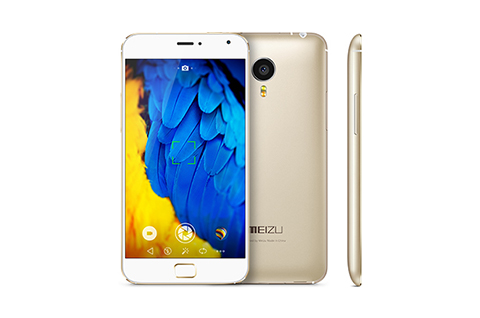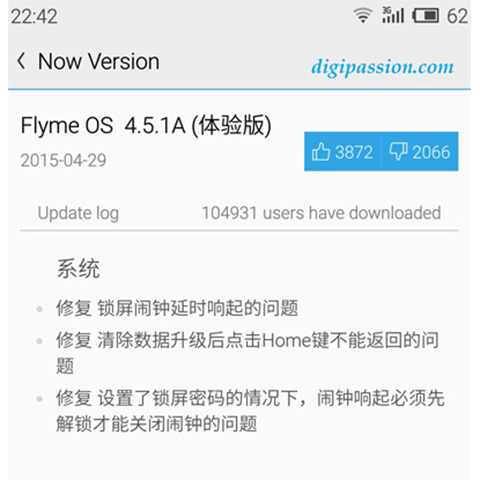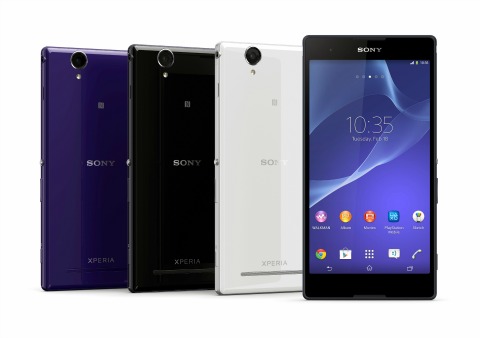
In celebration of the new Android 5.0 “Lollipop”, we collated the sweet history of Android versions since its launch back in 2008.

The first commercially available Android smartphone was the HTC Dream or T-Mobile G1. (check out our review here). It had Android 1.0 on-board.
While Android 1.0 (Sept. 2008) and 1.1 (Feb. 2009) were the earlier versions of Android, they didn’t had a desert nickname yet. Instead, they were treated as the “A” and “B” of the naming scheme. So we start with the third letter of the English alphabet.
Android 1.5 Cupcake (April 2009)

Cupcake was the original dessert of Android. While it didn’t differ much visually compared to its predecessor, it brought the most important thing that Android offers up to now. Widgets were first featured through this update and boy, it was just the beginning of it.
Android 1.6 Donut (September 2009)

The second sweet on the conveyer belt was the Donut. Again, not a visual overhaul but rather a under-the-hood update. It gave Android faster camera access, support for a higher screen resolution, and access to CDMA network. Plus, the battery usage indicator made its debut.
Android 2.0 Eclair (October 2009)

E was for Eclair, a French pastry with cream filling and icing on top. For Google, Eclair gave Android a new look and its needed productivity update to be a better smartphone like multiple E-mail accounts, Microsoft Exchange support, a new keyboard, and a better browser. Bluetooth 2.1 was also initially supported in this update.
Check out our Nexus One review here. It was the first Nexus device and the first phone to feature Android 2.0 Eclair.
Android 2.2 Froyo (May 2010)

Froyo was a healthy and tasty update. If we can properly recall, Froyo or 2.2 was one of accepted Android versions back then. It was during the reign of it that Android gained popularity among users and phone manufacturers. Aside from fame, Froyo brought a number of major improvements for Android. It had dedicated phone and browser shortcuts, USB tethering and WiFi hotspot functionality, Adobe Flash support, App to SD feature, revamped Gallery app, automatic application updates, and more!
The first dual-core smartphone, the LG Optimus 2X, was introduced with Android 2.2. We have a review of it here.
Android 2.3 Gingerbread (December 2010)

Aha! Gingerbread! Considered to be the most popular Android version. It continued the success of Froyo and Android’s popularity zoomed. We can still recall that even local manufacturers embraced Android Gingerbread. UI refinements were the special thing about this update along with the improving Android keyboard, internet calling, NFC, support for multiple sensors, and better battery management.
Nexus S was the first phone to ship with Gingerbread out of the box. Our impressions for the Samsung-made pure Android phone can be read here.
Android 3.0 Honeycomb (February 2011)

Android 3.0 dubbed Honeycomb might be the most unpopular version of Android. Google made this version specifically for tablets. It was optimized for larger displays, opening the window to the tablet market. It was also the debut of virtual navigation buttons. Noticeable changes to Android with Gingerbread was the system bar at the bottom of the screen and the rest were performance improvements. Android 3.0 could have been a great update if it was just polished and fluid.
The Motorola Xoom was the presenter of Android 3.0.
Android 4.0 Ice Cream Sandwich (October 2011)

The savior of Android was the Ice Cream Sandwich. Google introduced the 4.0 version as the merge of phone and tablet UI. It simply took off where Honeycomb left and added a bit more features to make it one of the biggest update. It completely redesigned Android with the Holo UI and Roboto font.
Android 4.0 embraced the virtual button which gave way to a more simpler and leaner phone designs. Resizable widgets, data management, revamped gallery, voice input, new camera app, face unlock, and Wi-Fi are among the noted changes.
Google tied up again with Samsung to create a Nexus phone, the Samsung Galaxy Nexus.
Android 4.1 / 4.2 / 4.3 Jelly Bean (July 2012 / November 2012 / July 2013)

Jelly Bean came in three variants with progressing taste each after update. Initially, the Android 4.1 launched “Project Butter” which promises a smoother experience throughout the system and Android 4.2 and 4.3 expanded the improvements of the update. That was the major promise of Google for its users which actually delivers on Nexus devices. A taste of Jelly Bean gave auto complete dial pad, OpenGL 3.0 graphics, virtual surround sound, multiple user accounts, HRD mode, lock-screen widgets, Daydream screensaver, bluetooth low-energy support, and a new camera UI.
Android Jelly Bean debuted with four Nexus devices. Android 4.1 with Nexus 7 (2012), Android 4.2 with Nexus 4 and Nexus 10, and Android 4.3 with Nexus 7 (2013).
Android 4.4 KitKat

Nestle, Hersheys and Google partnered to name the version 4.4 as KitKat. It was a simple update over 4.3, hence the 0.1 addition. Still, KitKat broadened Android further to more users and low-cost devices. UI changes include white UI elements, Google Launcher, immersive mode and a new dialer. Under the hood improvements were Project Svelte, which made Android’s minimum RAM requirement to 340MB from 512MB, wireless printing, and the experimental Android Runtime (ART). All these improvements are for the budget conscious, thus making Android smoother on low RAM smartphones.
However, the new Nexus 5 that was released with Android 4.4 KitKat was not a slouchy device. Revisit our Nexus 5 review here.
Android 5.0 Lollipop

After a year of waiting, we finally now have the 5th major version of Android, the Lollipop. Version 5.0 will bring a lot of changes and improvements to Android. Beginning with the Material Design that completely reforms the whole UI and even UX. Along with a fresh look, there are battery improvements under Project Volta and tweaked performance thanks to the full implementation of ART. There’s also 64-bit and OpenGL 3.1 support.
You may check out our top Android Lollipop features here to learn more about the new sweet Google OS.
There we have it. These are the flavors of Android since 2008. What version are you using? Hit the comments below!
The post The flavors of Android through the years appeared first on YugaTech | Philippines, Tech News & Reviews.



















